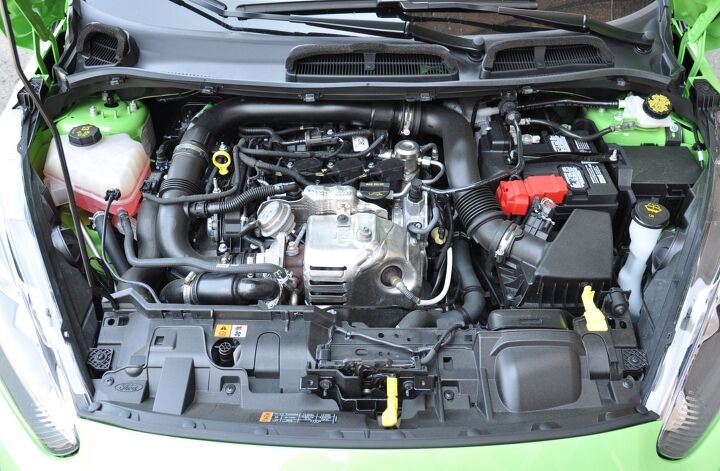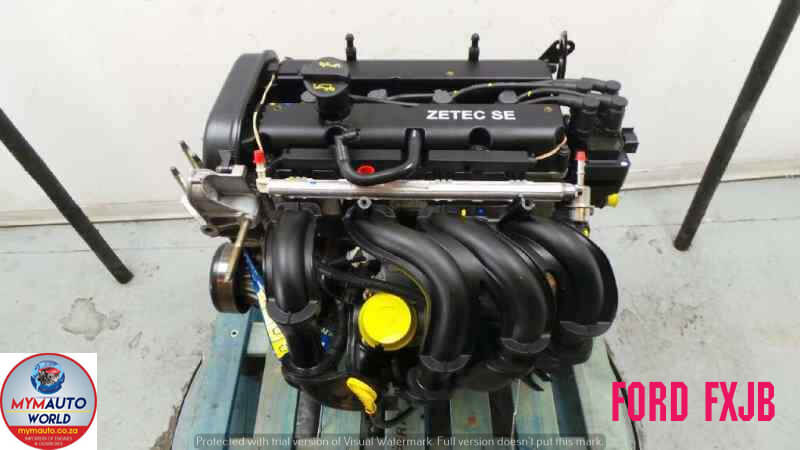How a Well-Maintained Ford Fiesta Engine Improves Vehicle Longevity
How a Well-Maintained Ford Fiesta Engine Improves Vehicle Longevity
Blog Article
Discovering the Advancement of Engines: From Traditional Layouts to Modern Marvels
The advancement of engine technology stands for a significant narrative in the background of technology, noted by critical improvements that have actually continuously redefined transportation and industry. From the first vapor engines that powered the Industrial Transformation to the development of interior combustion engines that changed wheelchair, each phase has actually added to higher efficiency and capability. Presently, the shift to electric power indicates not just a technical change however likewise a wider commitment to environmental sustainability. As we check out these turning points, one need to think about exactly how the future of engine style may unravel, testing our perceptions of power and efficiency.
The Birth of Engine Innovation
The advent of engine innovation noted a pivotal moment in human advancement, changing power conversion and transport. The earliest engines arised from the requirement to harness mechanical power for practical use, leading to the development of devices that converted various energy forms right into movement (ford fiesta engine).
The advancement of the interior combustion engine and the creation of the vapor engine militarized an extensive shift in industrial abilities. These engines not only enhanced efficiency but additionally expanded the scope of human movement, allowing unprecedented transportation opportunities. The very early models laid the foundation for the mechanical world, assisting in the surge of industries and improving societal structures.
As engine layouts progressed, they progressed and incorporated innovative products engineering concepts, paving the way for modern advancements - ford fiesta engine. The birth of engine modern technology stired up an unrelenting quest of efficiency and power, establishing the phase for the dynamic advancement of transport and commercial equipment that would adhere to
Steam Engines and Their Influence

The steam engine's impact was specifically apparent in the transport market (ford fiesta engine). Steam-powered engines promoted the fast movement of items and people across vast ranges, efficiently shrinking the geographical barriers that had actually previously prevented trade and interaction. Steamships revolutionized naval travel, permitting for quicker and much more trustworthy crossings of rivers and seas.
In market, vapor engines powered manufacturing facilities, allowing mass manufacturing and the surge of urban facilities as hubs of economic task. This change not only modified labor dynamics however additionally added to the appearance of a consumer-driven culture. Heavy steam innovation cultivated developments in design and production procedures, laying the foundation for future advancements in engine style. The legacy of vapor engines is profound, reflecting a zero hour in human ingenuity and the ruthless quest of progression.
The Surge of Inner Burning
Often eclipsing heavy steam power, the surge of internal combustion engines noted a transformative change in transport and sector throughout the late 19th and early 20th centuries. The growth of these engines, characterized by their ability to burn gas within the engine itself, made it possible for better performance and power contrasted to typical steam engines. Introducing developers such as Nikolaus Otto and Rudolf Diesel played crucial functions in improving engine designs, leading to prevalent adoption in automobiles, watercrafts, and commercial machinery.
The internal combustion engine's compact dimension and fairly lightweight nature helped with the development of individual automobiles, reinventing specific mobility and reshaping Click This Link city landscapes. By enabling faster travel and the efficient transportation of products, these engines militarized financial growth and fostered globalization. The flexibility of gas choices, consisting of gas and diesel, further boosted their appeal, allowing for varied applications across different markets.
In spite of the environmental worries that would later on develop, the initial attraction of internal burning innovation stocked its transformative capacity. As culture embraced this innovation, the structure was laid for modern transportation systems, developing internal burning engines as a cornerstone of commercial advancement and life throughout the 20th century.
Innovations in Engine Efficiency
As interior burning engines became integral to transportation and sector, the emphasis shifted towards enhancing their effectiveness to meet expanding demands for efficiency and sustainability. Innovations in engine style, product science, and image source modern technology have considerably added to this evolution.
One major innovation is the development of turbocharging, which enables enhanced air intake, leading to even more full fuel combustion and enhanced power outcome without increasing the size of engine dimension. Additionally, variable valve timing systems have been executed to enhance engine efficiency across different RPM varieties, therefore enhancing gas effectiveness.
The use of advanced fuel injection technologies, such as direct shot, has actually also played an important duty. This approach enables more precise control over the fuel-air mixture, promoting much better combustion and decreasing emissions. Lightweight products, including light weight aluminum and composite parts, have actually been embraced to reduce general engine weight, leading to improved effectiveness.
These developments reflect a more comprehensive pattern within the auto sector, where the harmony between engineering innovation and ecological factors to consider drives the recurring pursuit for higher efficiency in internal burning engines. Consequently, modern engines are currently a lot more powerful, cleaner, and reliable than ever previously, paving the way for a more lasting future in transportation.
The Change to Electric Power
With growing concerns over ecological effect and nonrenewable fuel source reliance, the automotive sector is experiencing a substantial shift in the direction of electric power. This transition is driven by a mix of technological advancements, regulative pressures, and changing consumer preferences. Electric lorries (EVs) use a compelling choice to standard inner burning engines, flaunting decreased greenhouse gas exhausts and reduced operating expense.
The increase of battery innovation has been see this page a video game changer, with lithium-ion batteries becoming a lot more efficient and affordable. Boosted energy density and faster billing abilities have actually made EVs more useful for everyday use. Furthermore, governments worldwide are carrying out motivations and setting enthusiastic targets for terminating nonrenewable fuel source automobiles, thereby speeding up the adoption of electric power.
Major automakers are investing greatly in r & d, bring about the introduction of a varied variety of electrical models. This includes not only guest vehicles however likewise industrial automobiles and public transport options. As billing framework expands and battery modern technology remains to enhance, the shift to electric power is positioned to reshape the auto landscape, advertising sustainability and technology in the years ahead. The future of transportation is electric, and the momentum is obvious.
Final Thought
The evolution of engine modern technology represents a significant trajectory of innovation that has actually exceptionally influenced transport and market. From the foundational steam engines to the transformative internal burning engines, each advancement has actually added to enhanced flexibility and economic development. The present shift toward electrical power highlights an important dedication to sustainability, driven by improvements in battery technology. This ongoing advancement not only reflects transforming societal requirements however likewise highlights the capacity for a cleaner and extra effective future in engine layout.

Report this page